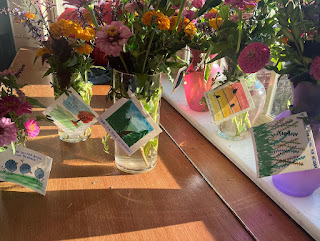Book Review: "Love Where You Live" is an inspiring guide for individuals passionate about enhancing their communities
Peter Kageyama's Love Where You Live: Creating Emotionally Engaging Places builds upon his earlier work, For the Love of Cities, delving deeper into the emotional connections between people and their communities. The book offers practical insights for both official and unofficial community leaders to foster environments that residents can genuinely love.
Three Lessons Worth Remembering
Empowering Local Co-Creators
Kageyama emphasizes the importance of building networks of co-creators within communities. He suggests that by engaging passionate residents in the development process, cities can cultivate a sense of ownership and pride among inhabitants. This collaborative approach not only enhances the city's appeal but also strengthens community bonds.
Embracing Authentic Identity
The author advises communities to discover and embrace their authentic identities. By highlighting unique cultural, historical, or natural attributes, cities can differentiate themselves and foster a sense of belonging among residents. This authenticity attracts both locals and visitors, contributing to a vibrant community life.
Leveraging Small Investments for Big Changes
Kageyama illustrates how modest funding can lead to significant community improvements. He provides examples of small-scale projects that have had substantial positive impacts, demonstrating that even limited resources, when used creatively, can make a city more livable and lovable.
Positive Observation
The book is lauded for its practical approach, offering actionable steps that community leaders can implement to enhance their cities. Kageyama's enthusiasm and optimism inspire readers to believe in their capacity to effect change, regardless of their official positions or resources.
Negative Observations
Limited Exploration of Challenges
While the book provides numerous examples of successful community initiatives, it may not sufficiently address the challenges and obstacles that can arise during implementation. A more in-depth discussion on overcoming resistance or failure would offer a more balanced perspective.
Potential Overemphasis on Small-Scale Projects
Kageyama highlights the impact of small investments, which is encouraging; however, this focus might underplay the importance of larger infrastructural developments necessary for comprehensive urban improvement. A discussion on integrating small-scale projects with broader city planning efforts could provide a more holistic view.
In conclusion, Love Where You Live serves as an inspiring guide for individuals passionate about enhancing their communities. Kageyama's insights encourage readers to take initiative, embrace authenticity, and recognize the power of small actions in creating emotionally engaging places.
Written by David L. Burton
MORE INFORMATION
Take the Engaged Neighbor pledge and
become part of a movement! The pledge outlines five categories and 20
principles to guide you toward becoming an engaged neighbor. Sign the pledge
at https://nomoregoodneighbors.com.
Individuals who take the pledge do get special invitations to future events
online and in person. Contact the blog author, David L. Burton via
email at dburton541@yahoo.com or visit his website at http://engagedneighbor.com.





Comments
Post a Comment